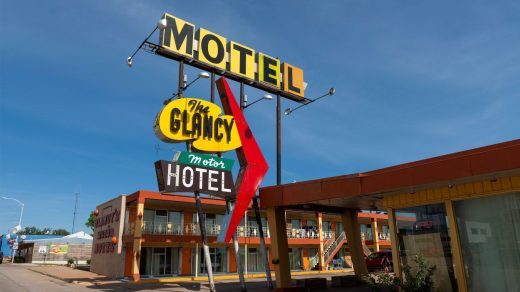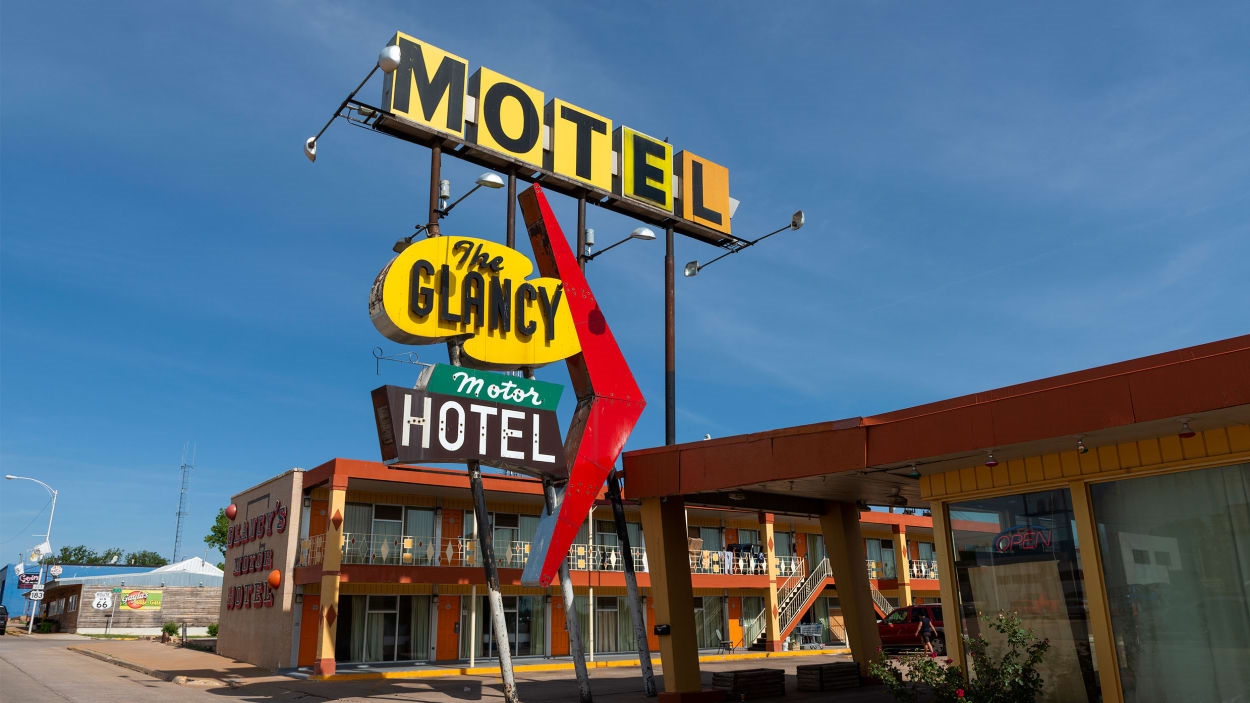A Route 66 landmark is facing demolition. Oklahomans say it’s worth saving
Few images evoke the spirit of Americana more vividly than Route 66, the famous highway that once stretched from Chicago to Santa Monica and for decades represented the freedom of the open road.
Today many sites along what’s left of the original highway are abandoned or in disrepair, including the Glancy Motor Hotel in Clinton, Oklahoma, a local landmark with a playful sign and bright-colored lettering that brim with midcentury charm. Sadly, the hotel will soon meet with a tragic fate, with officials having voted to approve a demolition bid in a city council meeting this week.
Rhys Martin, president of the Oklahoma Route 66 Association, a preservation group, says the decision to bulldoze the endearing piece of Route 66 history was made with little fanfare and despite a plea from the association to reconsider. In a phone call with Fast Company on Thursday, he said the process lacked transparency and that the decision makers showed no interest in exploring alternatives. He wasn’t clear on the timeline for demolition, but said discussions with a company to carry out the work were rumored to be already underway.
“I expect that means that it’s going to move fast,” he says.
According to Martin, the Clinton Economic Development Authority (CEDA) has jurisdiction over the project and the council approved its recommendations. “Their decision is really what goes,” he says.
The site of the Glancy Motel, a favorite fascination on websites like Dead Motels USA and Abandoned Oklahoma, was condemned by the city in 2019, but supporters found new hope a few years later when a local oilman submitted plans to renovate the Glancy and a nearby restaurant called Pop Hicks to their former glory. As chronicled in detail on a Route 66 news website, those plans ultimately didn’t happen.
Roland Mower, director of the CEDA, says he was surprised by the sudden vocal opposition to the demolition. He says the CEDA fully supported the restoration efforts and went through two extensive rounds of requests for proposal, but they were ultimately unable to find a developer that could bring the proper economic value to the site in the way that other restored historic motels along Route 66 have done. “You have to have someone with deep pockets to do this,” he told Fast Company.
He said that most rooms have already been torn down and only a handful remain. As for the famous sign, he insisted that will be saved and moved to a different location, possibly the Route 66 Museum, which is also in Clinton. The fate of the property is a “done deal,” he added; it will become a multi-use facility that will be used by the Oklahoma Highway Patrol.
Martin says what’s at stake is not just a single dead motel but the bits and pieces of history that, when strung together, make the eight-state Route 66 a living landmark worth visiting. “Rutgers University has released multiple studies showing the world-wide recognition that Route 66 has and how towns, big and small, see increased tourist spending when the identity of the highway is embraced,” the association wrote in a Facebook post.
The National Trust for Historic Preservation, which placed the famous roadway on a list of endangered places in 2018, says it should be designated a federal National Historic Trail. But its preservation is an especially resonant issue in Oklahoma, which is home to over 400 miles of Route 66 and yet has few options when it comes to historic lodging, Martin says, meaning travelers might be more apt to just push on through and into Texas. (For what it’s worth, the route owes its existence to a famous Tulsan.)
Meanwhile, interest in the world’s most famous highway is growing as it approaches its centennial, officially marked for 2026. Its biggest champions, including almost 500 people who signed an online petition to save the Glancy Motel from the wrecking ball, only hope that enough of Route 66 still exists by then.
(12)



